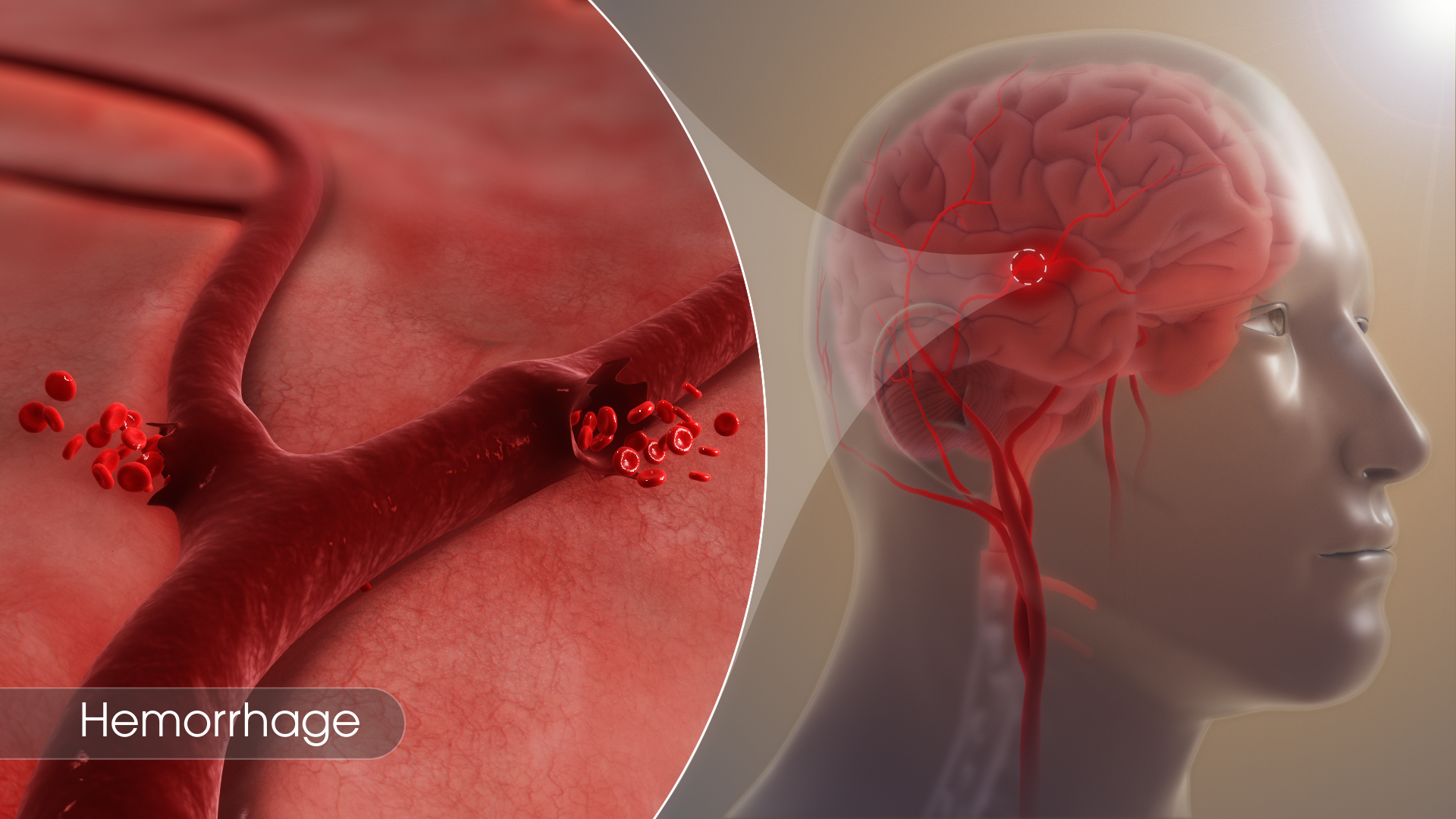Hemorrhage, also called bleeding, is the term used to describe blood loss. Blood escaping from the circulatory system because of damaged blood vessels is called hemorrhage. Bleeding or hemorrhage can be external or internal. External bleeding is when the blood escapes through a break in the skin. Internal bleeding is when the blood leaks out from a damaged blood vessel or organ. Blood loss can also happen through a natural opening in the body such as the mouth, vagina, nose, ear, and anus.
Hemorrhage is divided into four classes :
- Class 1: In this class of hemorrhage, up to 15% of the volume of blood is lost. There may be no change in the vital signs of a person.
- Class 2: In this class, between 15 to 30 percent of the blood volume is lost. The person will have a rapid heartbeat and his skin will turn pale.
- Class 3: In this class, between 30 to 40 percent of the blood volume is lost. The person starts to experience low blood pressure, increased heart rate, shock, and mental state worsens.
- Class 4: In this class, more than 40 percent of the volume of blood is lost and aggressive resuscitation is required to prevent death.
Causes
Hemorrhage or bleeding is a very common symptom. It arises due to a traumatic injury, an underlying medical condition or a combination of both. The various causes are :
Injury: Injury is a very common cause of traumatic bleeding. Traumatic bleeding varies in severity. Types of traumatic bleeding are:
- Abrasions
- Bruises
- Lacerations
- Puncture wounds from knives or needles
- Gunshot wounds
- Crushing injuries
- Contusions
- Incision
Medical conditions: Bleeding due to medical condition is rarer than bleeding due to injury. The medical conditions that could cause hemorrhage are :
- Hemophilia
- Leukemia
- Liver disease
- Thrombocytopenia
- Brain trauma
- Vitamin k deficiency
- Lung cancer
- Acute bronchitis
- Colon diverticulosis
Treatment
If the bleeding is not stopped, a person can usually bleed to death in a few minutes. It is possible to treat external traumatic bleeding. If it is a minor wound, local first aid is often sufficient. If it is a serious wound, then it is a medical emergency and more complex procedures such as sutures, medicated dressing and surgery may be commonly required. If the bleeding is internal then also it is a sign of a medical emergency and the person must be rushed to the hospital.
Hemorrhage or bleeding can often cause fear and stress. But one should try and stay calm and be prepared with a first aid kit. That will make a difficult experience a little less traumatic.
Disclaimer: The information in no way constitutes, or should be construed as medical advice. Nor is the above article an endorsement of any research findings discussed in the article an endorsement for any of the source publications.









